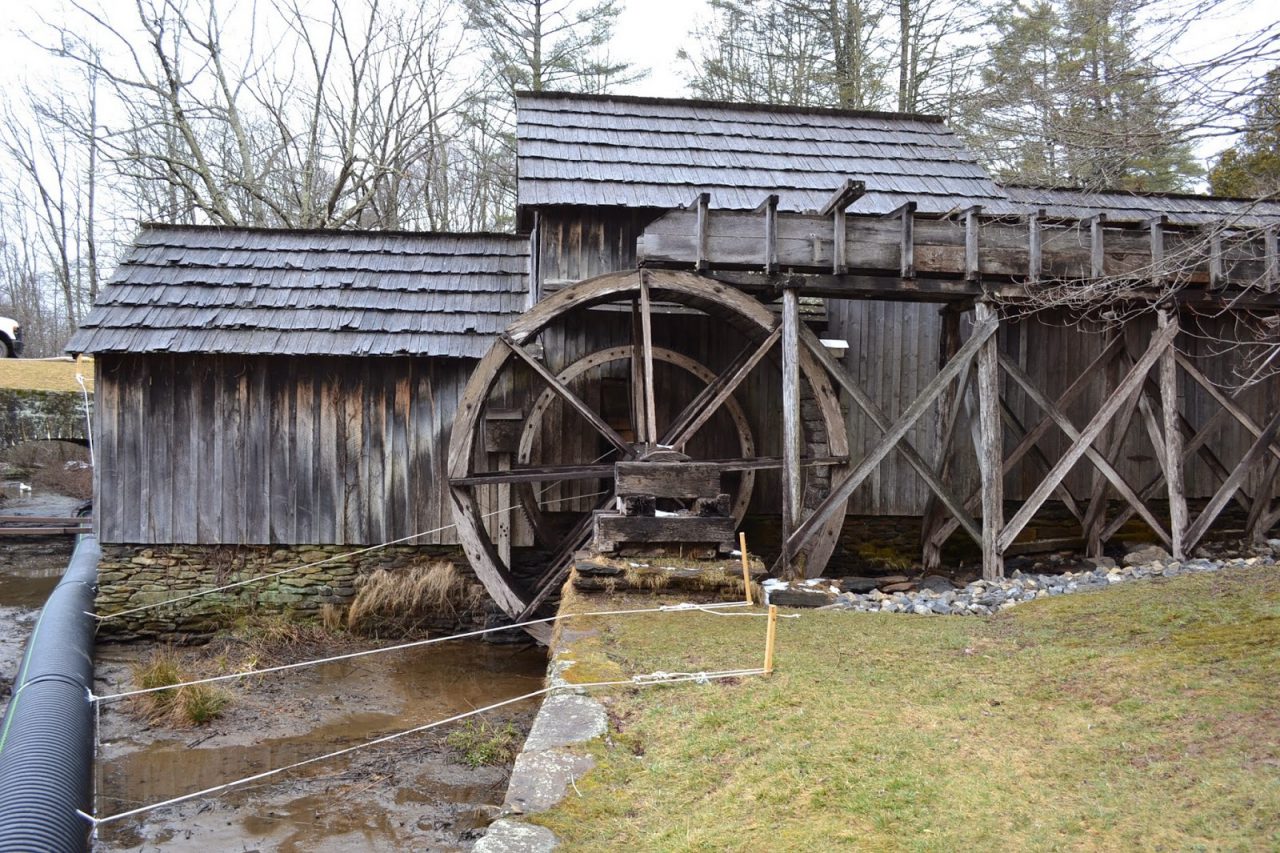Blue Ridge Parkway historians make a pretty good case that the old mill near Milepost 176 is one of America's cultural treasures. It has become an icon for the American country mill — weathered board- and-batten siding, stone-lined drains and flumes gathering water from seeps and trickles and creeks across the gently sloping land, converging to provide the rushing water power that turns a big wooden waterwheel and drives a grist mill, a sawmill, lathes and other tools, even a sash saw of the kind once used to build window parts.
And it's gorgeous, particularly in the fall when the maples are in full-burn color, reflected against a lovely little pond where ducks paddle back and forth as the waterwheel creaks and groans and splashes fresh, clear mountain water about the stony foundation of the mill. The image of this mill has adorned postcards sold in other states. "Greetings from Iowa," notes one of them. Another says, "Greetings from Connecticut." It looks just like what you'd find in some rural New England hamlet. But it's not. It's in Virginia, near the little crossroads of Meadows of Dan.
It's Mabry Mill, a reconstruction of a century-old mill built by Edwin Boston Mabry, known to some as E.B. and to others as Ed, whose family owed land near the border of Floyd and Patrick Counties as long ago as the 1780s. More than a century later, Ed Mabry had a water-powered lathe that he used to make chairs, according to an online history by the Blue Ridge Parkway: "Later he worked as a blacksmith in the coal fields of West Virginia. In 1903 he returned to Floyd County and soon began construction of the mill. It was first a blacksmith and wheelwright shop, then became a sawmill. By 1905 it was in operation as a gristmill. By 1910 the front part of the mill was completed and included a lathe for turning out wheel hubs, a tongue and groove lathe, a planer and a jig-saw.
"Between 1905 and 1914 he bought adjacent tracts of land, mostly for the purpose of acquiring more water power. Those who knew Ed Mabry thought well of him and have described him as peaceable, easy-going, honest, hard-working, a Primitive Baptist and a Republican. Whatever he needed he tried to make himself including most of the furniture in his home. He didn't travel much, but when he did it was either on foot or in his one-horse Concord wagon. Today the Mabry Mill is one of the most popular attractions on the entire Blue Ridge Parkway."
The mill has, of course, been rebuilt a number of times. Even using the most weather-resistant of natural woods, the hard winters and long summers take their toll, and every 15 or 20 years the old mill needs body work and a good worming-out of the silted-over pond. Also, the pond has filled up with silt and other things that have slid down the hillside and rolled in on the creek. You could, I'm told, walk across the pond without getting wet much above the knees — if you didn't first go neck-deep in the silty mud that fishermen call pluff.
And that's not all: the waterwheel is in bad shape. The buckets on the wheel — the compartments that water from the flume pours into and forces the wheel to turn with an increasing amount of power as the flow of the water increases — have weathered away in some places.
So the National Park Service has to do periodic maintenance on its buildings and its landscape, at a time when Congress seems in no mood to provide adequate funds for personnel or sufficient maintenance to keep the national jewels in good shape. More than a year ago, the Blue Ridge Parkway asked the Blue Ridge Parkway Foundation — a private group that raises money and helps support the Parkway in a variety of ways — for help. The Foundation (whose board of trustees I serve on) agreed to provide funding for rebuilding the waterwheel; early this year the Foundation also agreed to provide funding for dredging the pond. (The Blue Ridge Parkway Foundation's website is at www.brpfoundation.org.)
Dredging work began in foul weather recently and ended successfully, but that's another story. Stay tuned for more on the restoration work of the waterwheel and dredging of the millpond. And don't be confused by anything you read in the newspapers about the waterwheel being shipped off to Asheville; the work will be done on-site, Parkway officials say.
It's all taking a lot of ingenuity, scavenging for suitable materials and making the best use of resources that indicates that the kind of engineering skill that built Mabry Mill the first time a century ago has not entirely disappeared, thank goodness.









